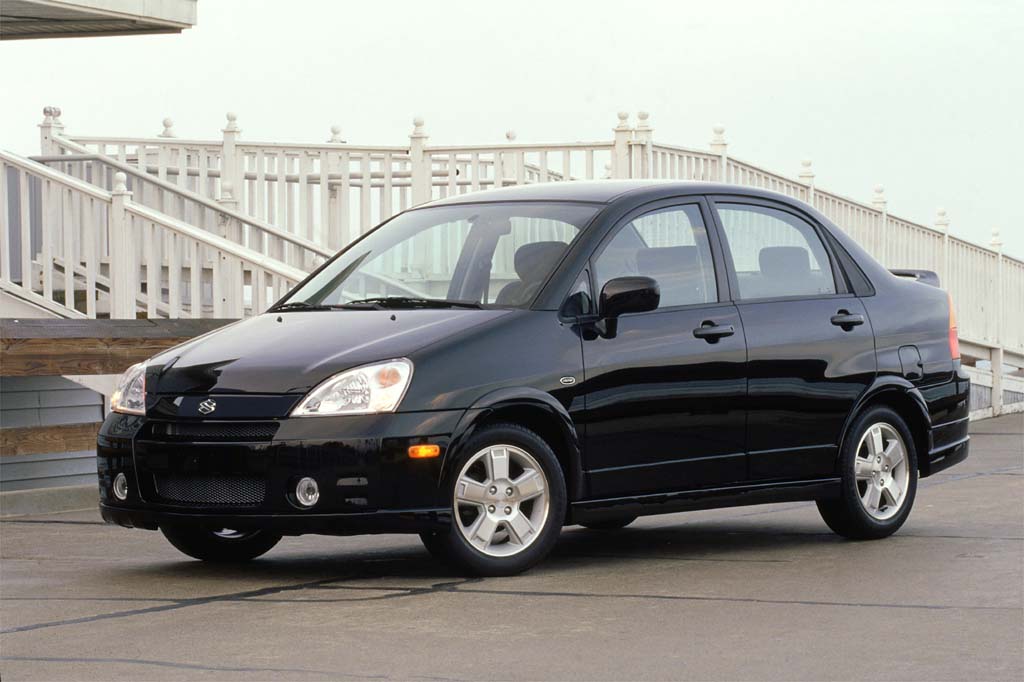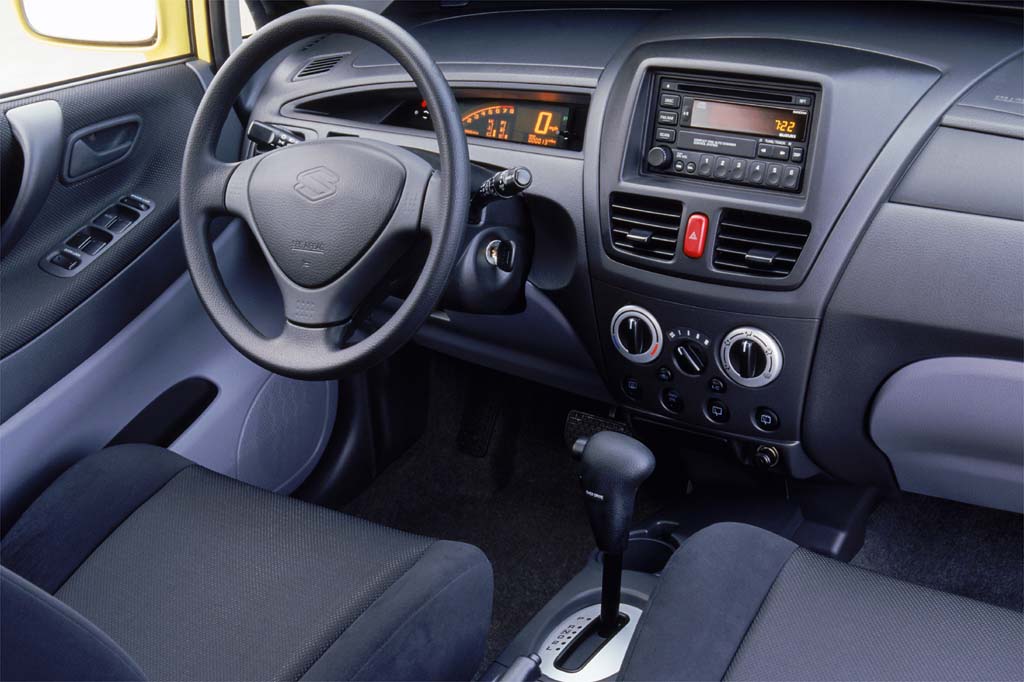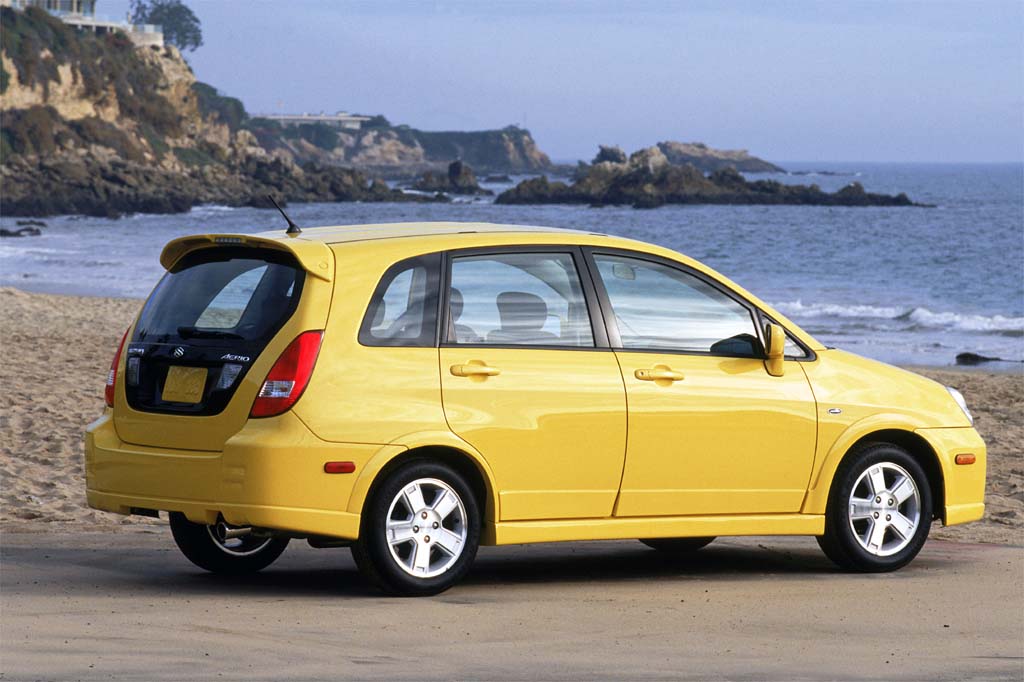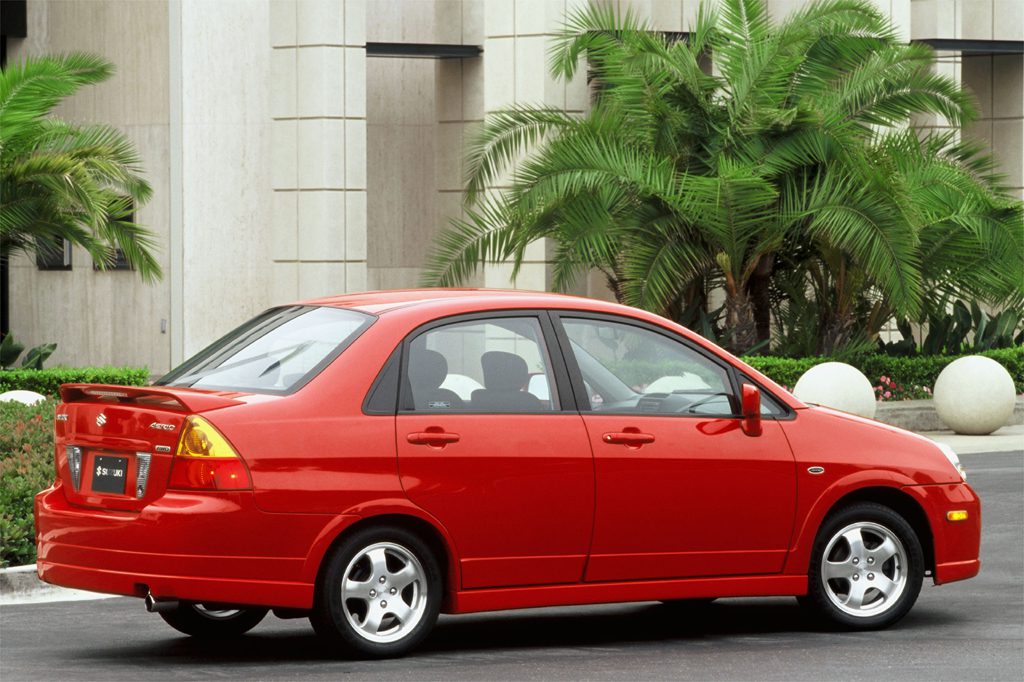| Compact car; Built in Japan |
|
|
| Good condition price range: $1,900 – $5,800* |

2002 Suzuki Aerio SX 4-door wagon

2002 Suzuki Aerio 4-door sedan

2002 Suzuki Aerio SX interior

2002 Suzuki Aerio SX 4-door wagon

2004 Suzuki Aerio 4-door sedan
| Pros: |
|
| Cons: |
|
Quirky and a bit sluggish, Aerio sedans can be efficient, low-cost commuter cars. Except for their tall build, though, they don’t really stand out among subcompact cars. Wagons are roomier and more versatile than most subcompacts. Both are deftly designed, relatively entertaining to drive, and were very competitively priced when new. Noise levels detract, but few subcompacts match the superior foul-weather traction of an AWD Aerio. Weak resale value against the top import brands could make the Aerio an appealing secondhand buy.
Overview
Aerio was a new entry-level subcompact, introduced during the 2002 model year in four-door sedan and wagon body styles with front-wheel drive. Among the smallest cars available in America, the Aerio was about the same size as Suzuki’s subcompact Esteem sedan and wagon, which were discontinued after the Aerios debuted.
Suzuki’s Aerio sedans came in S and uplevel GS trim, while the wagon came only in a single SX level. All Aerios used a 141-horsepower four-cylinder engine, which was among the most-powerful standard engines in the subcompact class. Both a manual transmission and an extra-cost automatic were available.
Antilock braking was optional, but standard equipment included air conditioning, power windows and mirrors, a tilt steering wheel, CD player, split-folding rear seats, and a tachometer. The GS sedan and SX wagon rode on 15-inch alloy wheels, which were optional for the S in place of 14-inch steel rims.
Competitors included the Ford Focus, Honda Civic, and Mazda Protege.
Yearly Updates
| 2003 Aerio All-wheel-drive versions of the Aerio sedan and wagon debuted in fall of 2002. Suzuki claimed that these were the least-expensive AWD models on the market. |
| 2004 Aerio Aerios gained power for 2004, exchanging the original 2.0-liter engine for a 2.3-liter four-cylinder that generated 155 horsepower. This year, the uplevel sedan was called LX rather than GS. QuadGrip all-wheel drive was available for the LX and SX with an automatic transmission. |
| 2005 Aerio Aerio gains revised styling this year, including clear-lense tail lamps, new front bumper and grille, a new dashboard with analog gauges, and the steering wheel gets audio controls. Also, front side airbags were made standard this year. |
| 2006 Aerio Antilock brakes are standard instead of optional for 2006. |
| 2007 Aerio Suzuki’s smallest car drops its hatchback body style in 2007, leaving a 4-dr sedan in base and Premium trims. |
